Teaching Fractions with Busy Things
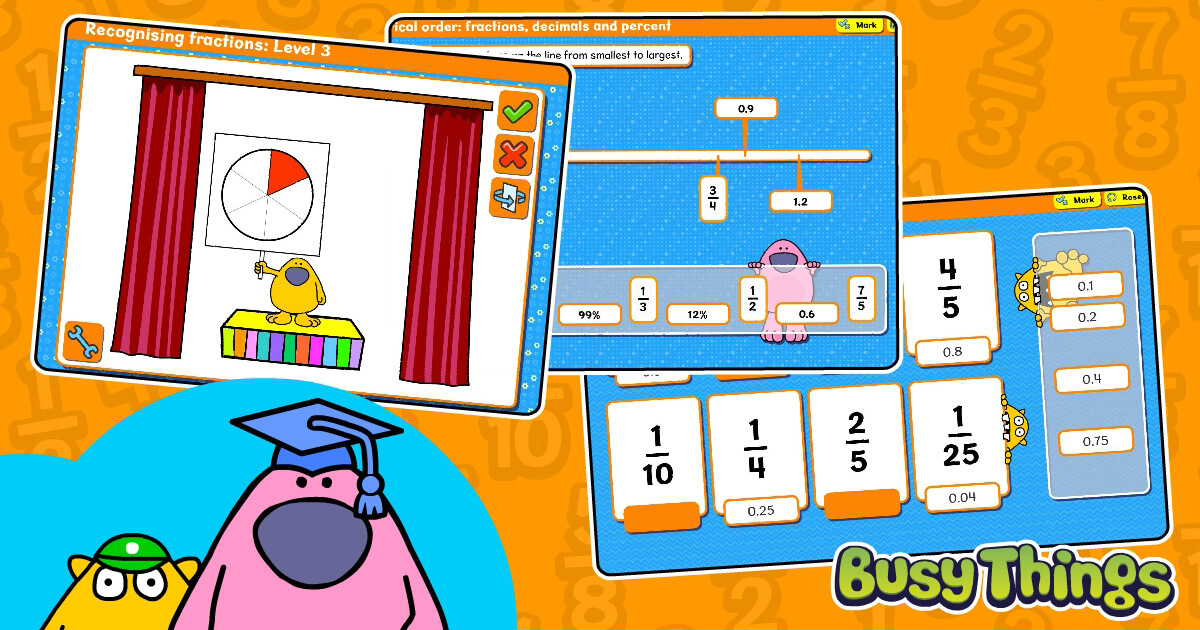
Fractions are an essential part of the National Curriculum for maths at primary school level. They need to be covered in every year group so that the children can gradually build on their understanding. It can be tricky at the beginning as fractions are an abstract concept that some children are developmentally not ready for but most teachers find that representing fractions visually really helps.
Here at Busy Things, we’re massive fans of using imagery to support learning. And also understand how best to build on pupils’ skills year-on-year. That is why, in line with the National Curriculum, we have activities and games to support the teaching and learning of every fraction-based learning objective.
In this blog, we highlight the key areas of the National Curriculum relating to fractions for each year group. We then give you a free fractions activity to play, so that you can see how each learning objective is addressed.
If you’d like to see more as a result of this taster, feel free to explore Busy Things further. This is best achieved by taking a free trial, which you can do here.
Year 1
In Year 1, pupils should be taught to:
- Recognise, find and name a half as one of two equal parts of an object, shape or quantity
- Recognise, find and name a quarter as one of four equal parts of an object, shape or quantity.
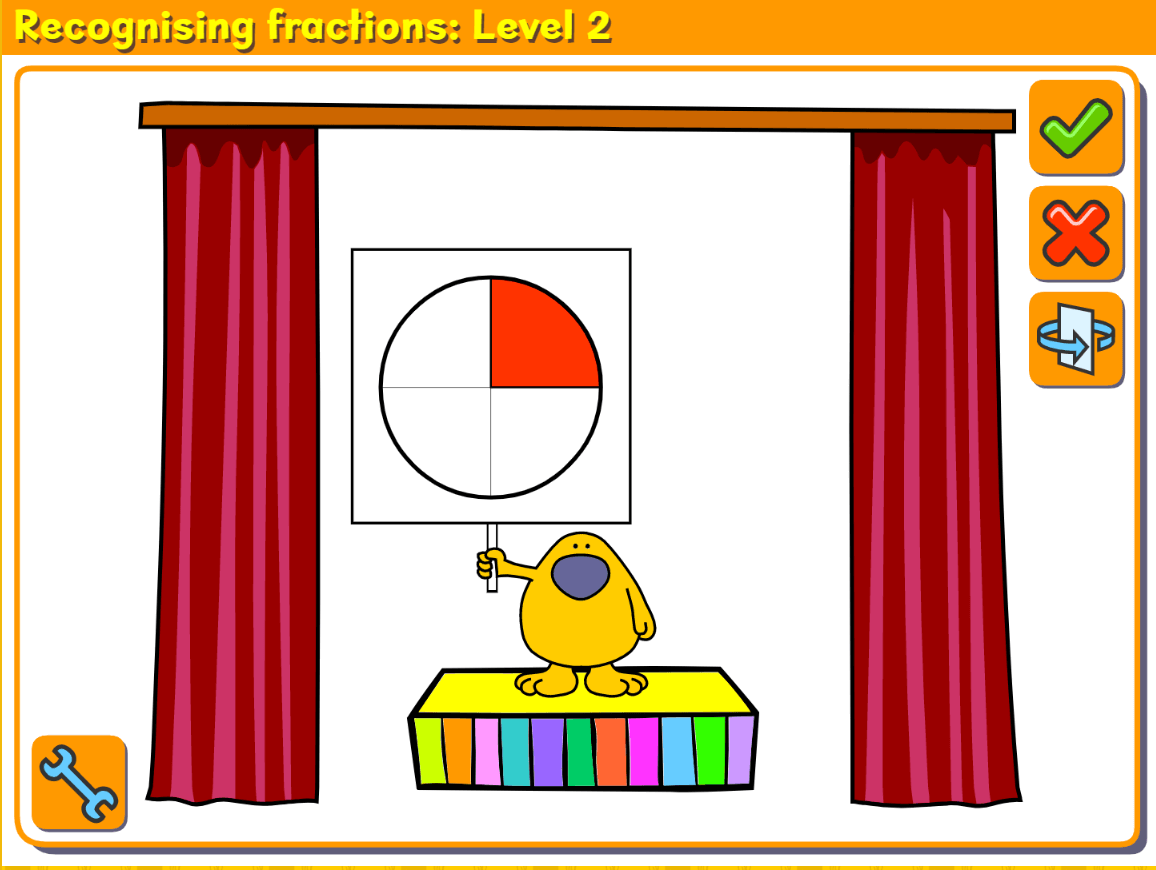
Our teacher-led flashcards are a great first introduction to fractions, and allow you to go at the pace the class requires.
There are two ways to use the flashcards. These are explained within the activity. Initially we’d recommend you select the right/wrong animations and retrying so you can work through the examples as a class.
Year 2
In Year 2, pupils should be taught to:
- Write simple fractions, for example ½ of 6 = 3 and recognise the equivalence of 2/4 and 1/2.
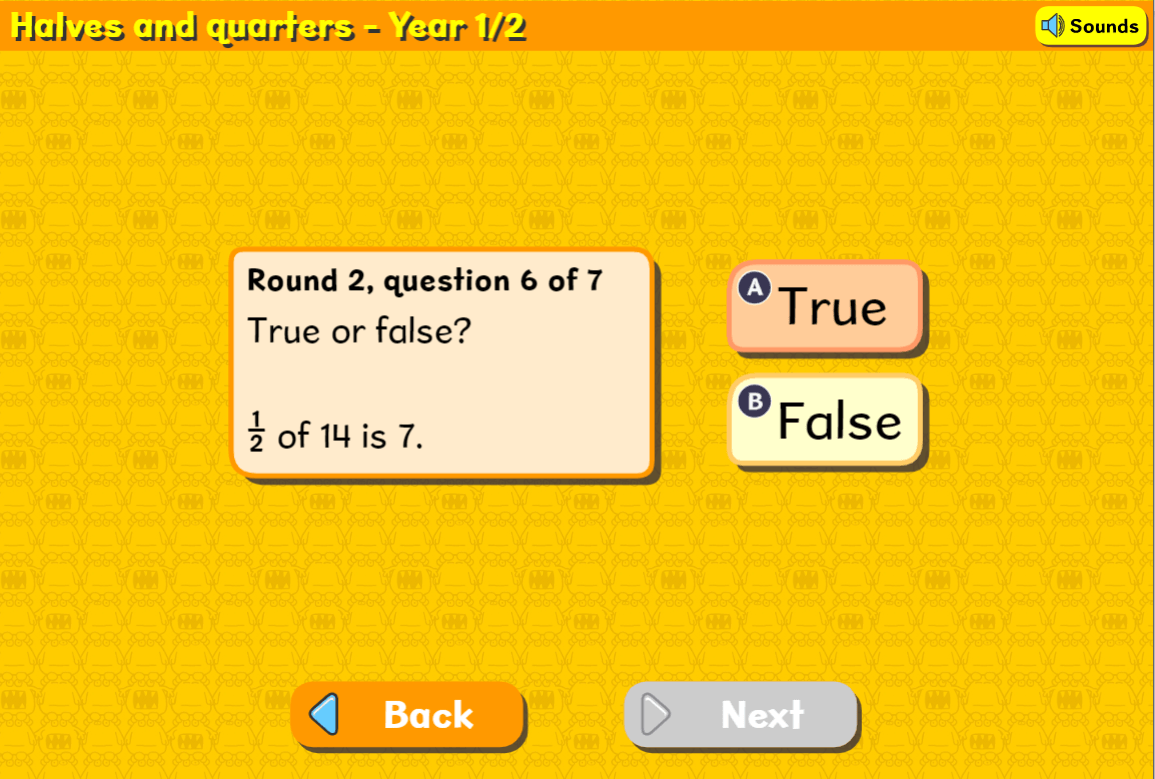
The halves and quarters quiz on Busy Things is a fun activity that helps children recognise a half or quarter of a shape, a half or quarter of a quantity, and as in the example on the right the concepts in writing too.
As a teacher, you can select which of the three rounds (shape fractions, quantity fractions, written fractions) the children play. Set them the quiz as an Assignment, and they will receive exactly the same questions, making it perfect for formative assessment.
Year 3
In Year 2, pupils should be taught to:
- Recognise, find and write fractions of a discrete set of objects: unit fractions and non-unit fractions with small denominators
- Recognise and use fractions as numbers: unit fractions and non-unit fractions with small denominators
- Add and subtract fractions with the same denominator within one whole (for example, 5/7 +1/7 = 6/7)
- Compare and order unit fractions, and fractions with the same denominators
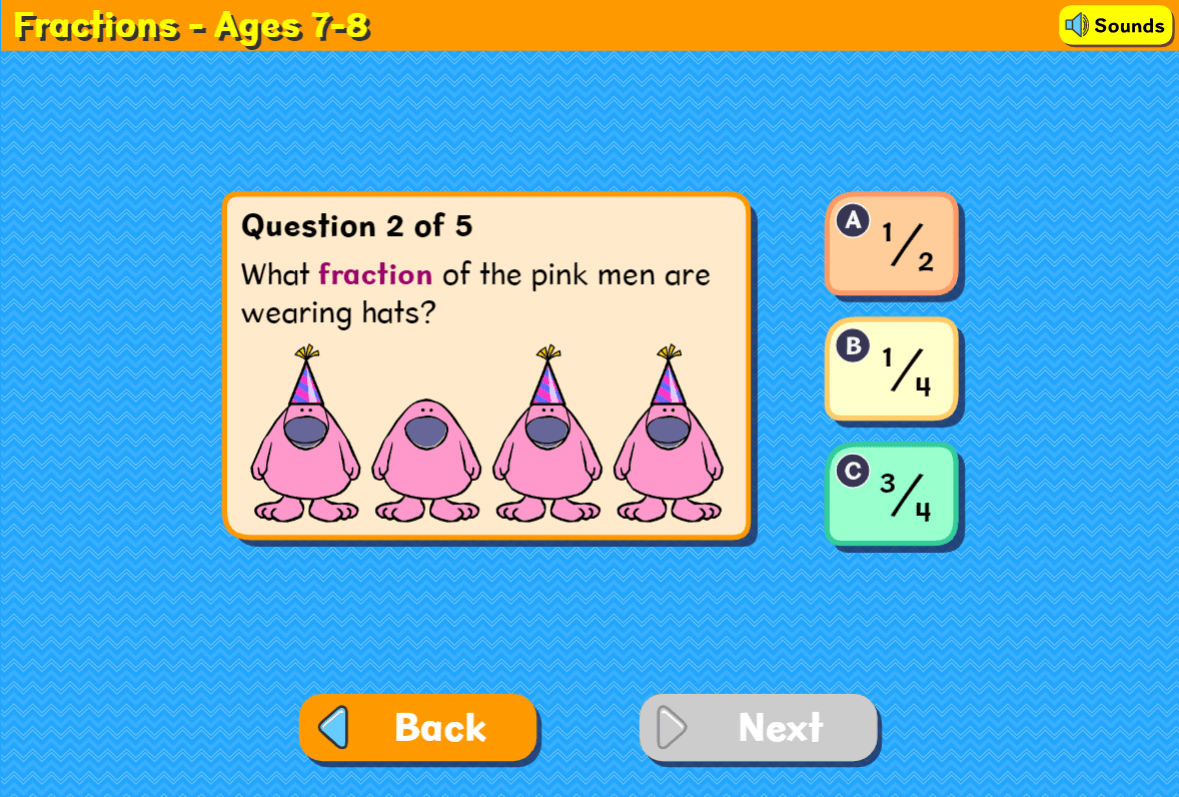
Busy Things’ Fractions quiz in Year 3 tackles all these learning objectives so is great for practice and knowledge reinforcement.
Split into two sections, you can choose to focus on identifying fractions of a discrete set of objects or to compare, order and calculate fractions with the same denominator.
Year 4
In Year 4, pupils should be taught to:
- Add and subtract fractions with the same denominator
- Recognise and write decimal equivalents of any number of tenths and hundredths
- Recognise and write decimal equivalents to ¼, 1/2, ¾
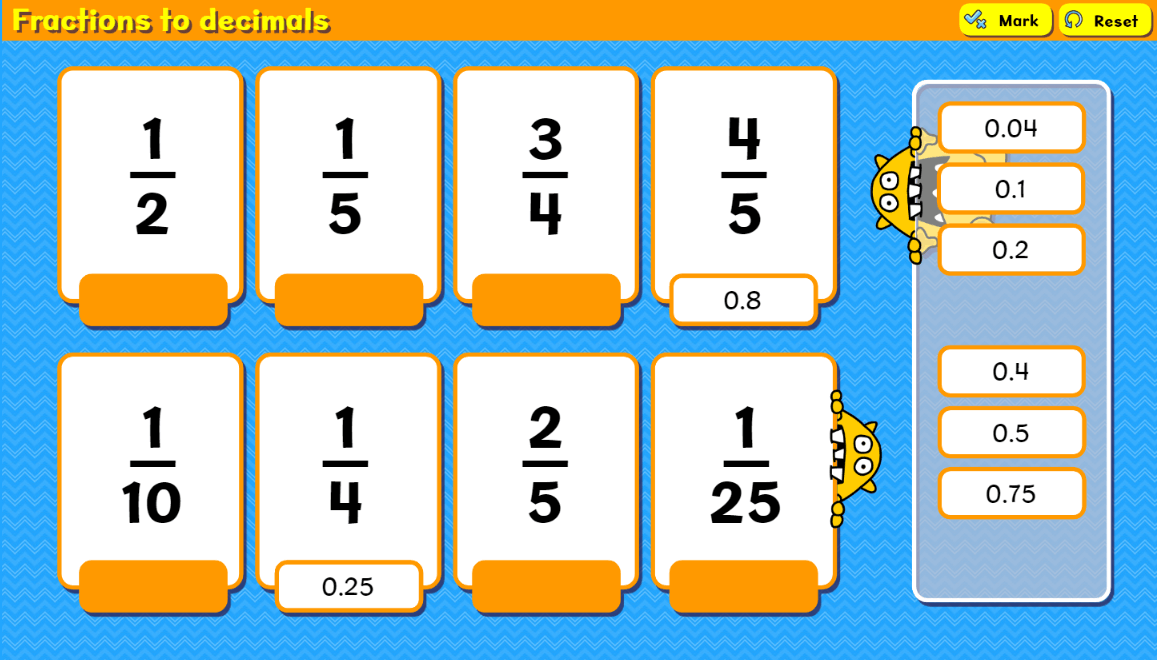
Busy Things’ Fractions to decimals interactive worksheet will give your pupils plenty of opportunity to practise converting fractions to decimals.
You can set the activity so that the children can learn by trial and error, or assign it so that you can see exactly where they are in their learning.
Year 5
In Year 5, pupils should be taught to:
- Compare and order fractions whose denominators are all multiples of the same number
- Identify, name and write equivalent fractions of a given fraction, represented visually, including tenths and hundredths
- Recognise mixed number and improper fractions and convert from one form to the other and write mathematical statements > 1 as a mixed number (for example, 2/5+4/5 = 6/5 = 1 1/5)
- Add and subtract fractions with the same denominator and denominators that are multiples of the same number
- Read and write decimal numbers as fractions (for example, 0.71=71/100)
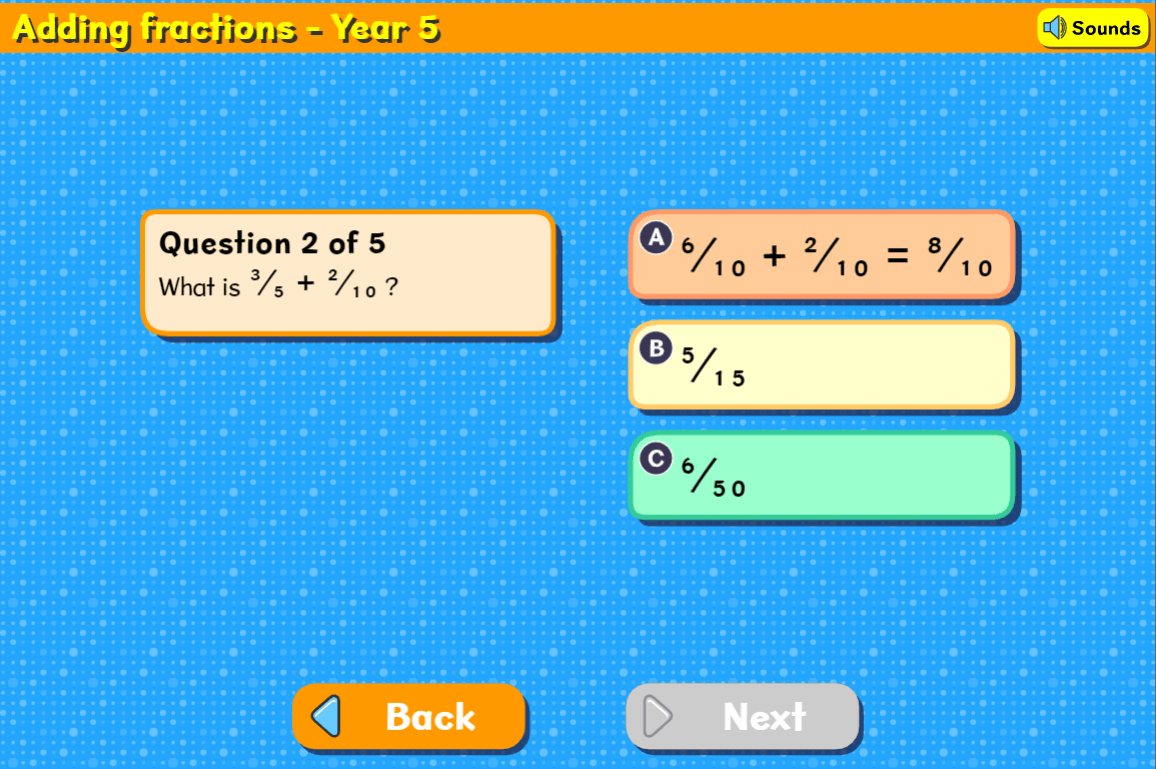
Our Adding fractions quiz really puts the pupils’ understanding to the test as it asks the children to add and subtract fractions with denominators that are multiples of the same number.
The quiz is multiple choice, so analysing the pupils’ incorrect responses will help you address misconceptions.
Year 6
In Year 6, pupils should be taught to:
- Compare and order fractions, including fractions > 1
- Multiply simple pairs of proper fractions, writing the answer in its simplest form (for example, ¼ x ½ = 1/8)
- Divide proper fractions by whole numbers (for example, 1/3 divide by 2 = 1/6)
- Read and write decimal numbers as fractions (for example, 0.71=71/100)
- Recall and use equivalences between simple fractions, decimals and percentages, including in different contexts.
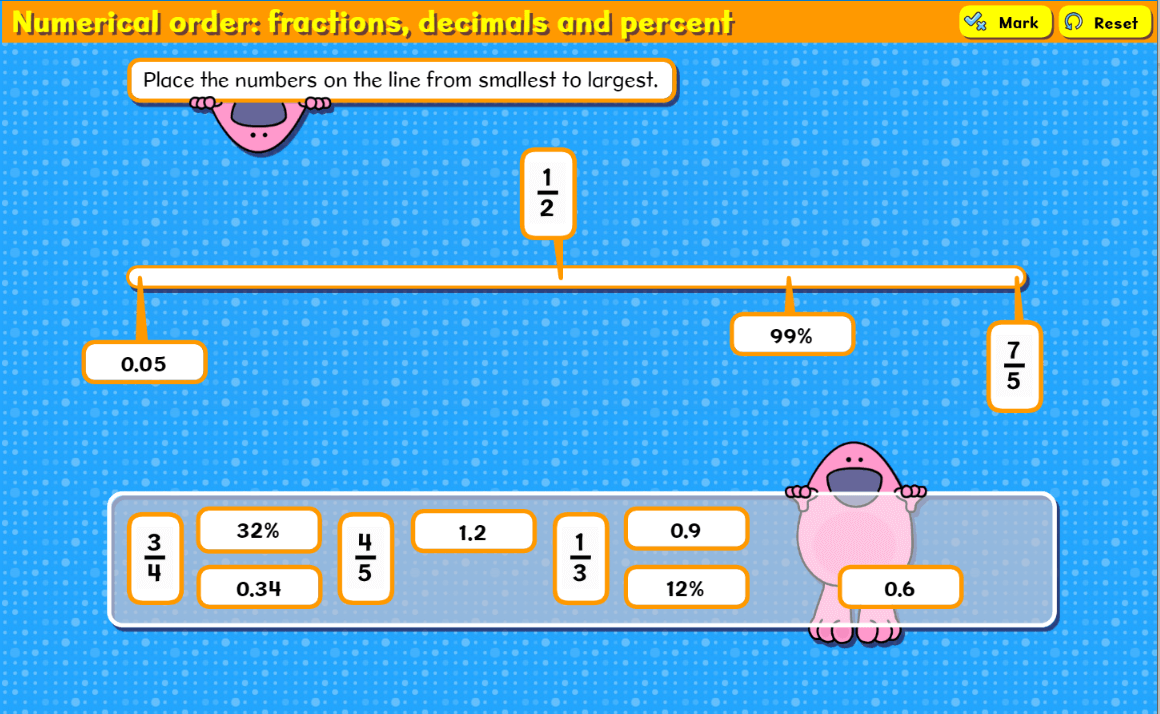
There are a number of quizzes and interactive worksheets for Year 6 that address the above learning objectives. They give your pupils plenty of options for practising their skills.
Your pupils could be asked to drag and drop different values (fractions, decimals and percentages) onto the number line as in the Numerical order: fractions, decimals and percentages interactive worksheet (left) or to simply choose the correct result from a selection.
Summary
We hope you’ve found our step-by-step guide to our fraction activities useful. And can see how they, along with the many other activities we have in this area, can help you build on your pupils’ knowledge. Take a look at the suggested activities yourself and see how your class responds.
If you’re already a Busy Things subscriber, or trialing Busy Things, you’ll be able to find each of the activities by searching for ‘fractions’ or the activity title within the Search tool. If you’ve not got a login, it’s quick and easy to set up a free trial. Simply click here and you’ll get 28 days free access to play these (and all our other) activities with no obligation to subscribe.